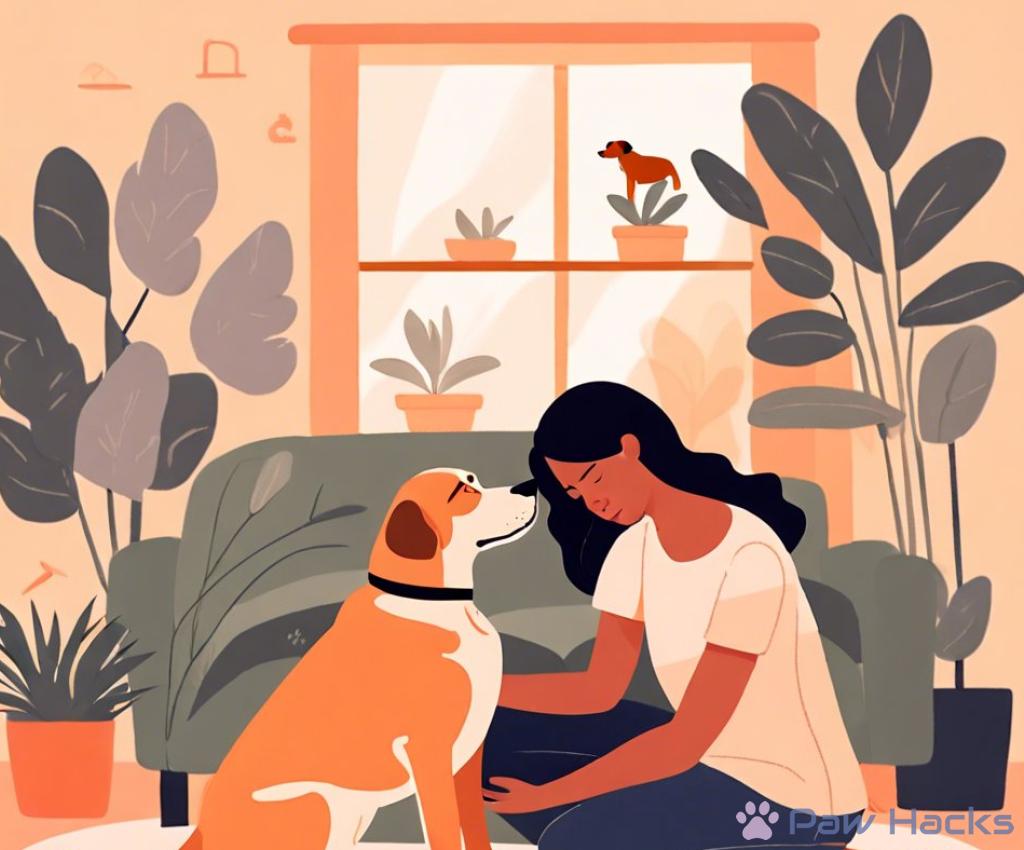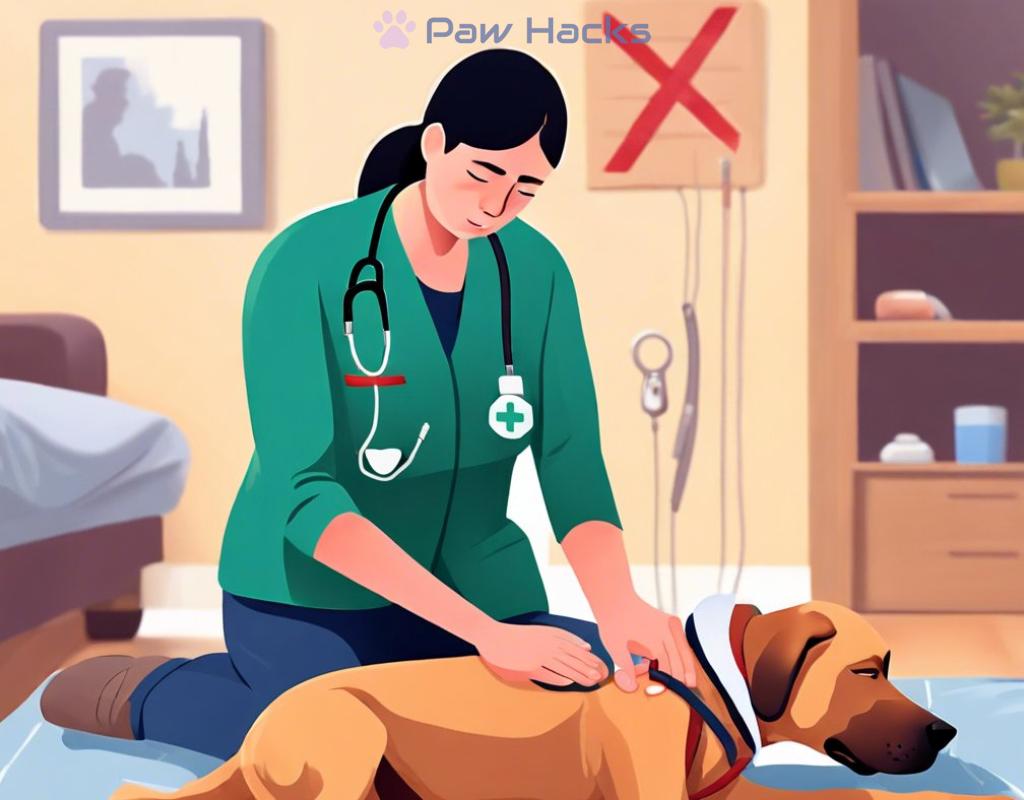Dog Seizure First Aid Tips
Stay Calm: Your Dog Needs You to Be Collected

Understanding the Situation
When your beloved canine companion experiences a seizure, it can be a shocking and frightening event. Your dog needs you to remain calm and composed during this distressing time. In this moment, your reaction can greatly impact your dog’s recovery and safety. Knowing what to do can help you provide the best care possible.
Essential First Aid Steps to Take
Taking immediate action during a seizure is crucial. Here are the essential steps you should follow to ensure your dog’s safety:
- Stay Calm: Your dog can sense your anxiety. Take a deep breath and focus on helping them.
- Clear the Area: Remove any objects that could potentially harm your dog during the seizure.
- Time the Seizure: Note how long the seizure lasts. If it exceeds five minutes, seek veterinary assistance immediately.
- Do Not Restrain: Avoid holding your dog down. This can lead to injuries for both you and your pet.
- Comfort After the Seizure: Once the seizure subsides, gently speak to your dog and stroke them calmly to help them recover.
When to Seek Professional Help
Understanding when to contact your veterinarian can be challenging. Here are some indicators that require immediate professional attention:
| Situation | Action |
|---|---|
| Seizure lasts longer than 5 minutes | Call your vet immediately |
| Multiple seizures occur in a short period | Seek emergency care |
| Your dog does not regain consciousness | Bring your dog to the vet |
In times of stress, remember that your calm demeanor and composed actions are essential. By being prepared and knowing how to act, you can significantly improve your dog’s chances of a safe recovery.
Creating a Safe Space: How to Protect Your Dog During a Seizure
When a seizure strikes, ensuring your dog’s environment is safe is paramount. Your canine may be disoriented and vulnerable, making it crucial to mitigate any potential hazards. By preparing a secure area, you can minimize the risk of injury and promote a smoother recovery for your furry friend.
Assessing the Environment
The first step in creating a safe space is to quickly assess the surroundings where your dog is during the seizure. Look for sharp objects, furniture edges, or anything that could pose a danger. Clearing these items away is essential to prevent your dog from accidentally hurting themselves. Move them to a room that has soft surfaces, like carpets or rugs, to cushion their fall and reduce the impact.
Providing Comfort and Space
Once the area is cleared, it’s vital to ensure that your dog has room to move without hitting anything. Keeping a comfortable distance around your pet can help them feel more secure. If possible, create a small barrier using pillows or blankets to form a protective space around them. This not only helps to keep them safe but can also offer a sense of security during the distressing moment.
After the seizure has ended, your dog may feel confused or scared. Offering gentle reassurance is key; speak softly and calmly, letting them know everything is alright. Your presence and voice can help ground them as they come back to their senses.
In summary, being proactive in creating a safe environment can greatly influence your dog’s experience during a seizure. By taking these precautions, you not only protect your pet but also foster a more comforting atmosphere, aiding their recovery.
Recognizing the Signs: Identifying Different Types of Seizures in Dogs
Being able to identify the signs of a seizure in dogs is crucial for any pet owner. Recognizing the symptoms promptly can mean the difference between effective first aid and potential complications. Seizures can vary significantly in their presentation, and understanding these differences is vital for providing appropriate care. By familiarizing yourself with different types of seizures, you can respond more effectively when the unexpected happens.
Types of Seizures and Their Indicators
Seizures in dogs can be classified into several types, each with its own unique characteristics. Generalized seizures, often referred to as grand mal seizures, involve the entire body and are usually easy to recognize. During these episodes, your dog may experience muscle contractions, lose consciousness, and fall to the ground. In contrast, focal seizures are localized and may only affect one part of the body, such as twitching in one leg or facial spasms. These can be more difficult to detect, especially if they are mild.
Another type, known as psychomotor seizures, can manifest through unusual behaviors rather than physical convulsions. These may include frantic pacing, barking, or even sudden aggression. Absence seizures are brief episodes where the dog may seem to stare blankly into space, momentarily unresponsive to the environment. Recognizing these signs is essential, as each type of seizure requires a different response.
What to Observe During a Seizure
When your dog experiences a seizure, take note of specific details to share with your veterinarian later. Timing is crucial; observe how long the seizure lasts and the type of movements your dog exhibits. Additionally, watch for any pre-seizure signs, often referred to as the “aura,” which may include excessive panting, restlessness, or hiding. This knowledge can provide your vet with valuable insights into your dog’s condition.
Post-seizure behavior is equally important to monitor. After the seizure, dogs may appear disoriented, lethargic, or unusually anxious. Offering comfort through gentle petting and soothing words can help them recover from the experience. Your understanding of these signs not only aids in your dog’s immediate care but also equips you with crucial information for ongoing treatment and management.
What to Do Immediately: Step-by-Step First Aid for Canine Seizures
When faced with a seizure in your dog, knowing the immediate steps to take can be the difference between panic and effective care. The moments following a seizure are crucial, and having a clear plan can help you provide the necessary support for your furry friend. Here’s a straightforward guide to help you navigate this stressful situation.
Step-by-Step Actions to Take
Here’s a list of essential actions to follow when your dog has a seizure. Each step is designed to ensure your pet’s safety and comfort during this troubling event:
- Stay Calm: Your demeanor sets the tone. Take a deep breath to help you focus.
- Clear the Area: Safeguard your dog by removing any objects that may pose a risk of injury.
- Monitor the Time: Use a stopwatch or your phone to track the duration of the seizure; if it exceeds five minutes, seek veterinary assistance.
- Do Not Restrict Movement: Avoid holding your dog down; instead, allow them to move freely to prevent injury.
- Comfort After the Seizure: Speak softly to your dog and provide gentle petting to help them regain composure.
Post-Seizure Care and Observation
Once the seizure has subsided, your dog may remain disoriented or confused. This is a critical time for observation and care. Ensure a quiet environment and give them space to recover. Watch for any unusual behaviors, such as:
- Excessive drooling or panting
- Difficulty standing or walking
- Signs of distress or anxiety
By keeping a close eye on your dog during this recovery phase, you can provide valuable information to your veterinarian later, aiding in their ongoing care.
When to Seek Help: Understanding When to Call the Vet After a Seizure
When your beloved dog experiences a seizure, it can be an overwhelming experience filled with confusion and concern. While knowing how to respond during the episode is crucial, understanding when to seek professional help afterward is equally important. Not every seizure requires immediate veterinary attention, but recognizing the signs that indicate a need for expert care can make a significant difference in your dog’s health and well-being.
Critical Indicators for Veterinary Assistance
After a seizure, there are specific indicators that suggest it is time to contact your veterinarian. Being aware of these signs can help you act swiftly and effectively. Below is a list of conditions that warrant a call to the vet:
- Duration of Seizure: If your dog’s seizure lasts longer than five minutes, it is crucial to seek veterinary assistance immediately.
- Multiple Seizures: If your dog experiences more than one seizure in a short period, this may indicate a serious underlying issue that requires urgent care.
- Postictal State: If your dog does not seem to regain consciousness or appears unusually disoriented after the seizure, contact your veterinarian.
- Physical Injuries: If your dog sustains any injuries during the seizure, it is necessary to have them examined by a professional.
- Change in Behavior: Any sudden changes in behavior following a seizure—such as aggression, extreme lethargy, or fearfulness—should prompt a visit to the vet.
Understanding Post-Seizure Symptoms
After a seizure, dogs may experience a range of symptoms that can vary in severity. Monitoring these symptoms is essential for determining whether your dog requires professional help. Some common post-seizure symptoms include:
- Confusion and disorientation
- Excessive drooling or panting
- Unsteady walking or difficulty standing
- Increased anxiety or restlessness
While some postictal symptoms may resolve on their own, persistent or severe symptoms warrant a call to your veterinarian.
Proactive Approach to Canine Health
Being proactive in your dog’s health can help reduce the likelihood of future seizures and enhance their overall quality of life. Regular veterinary check-ups, maintaining a healthy diet, and managing stress can all contribute to your dog’s well-being. If your dog has a known history of seizures, having an emergency plan in place, including emergency contact information for your veterinarian, can provide peace of mind.
In conclusion, understanding when to seek veterinary help after a seizure is vital for your dog’s health. By observing their behavior, recognizing critical indicators, and maintaining an open line of communication with your veterinarian, you can ensure that your furry friend receives the best possible care.
Share this content:



